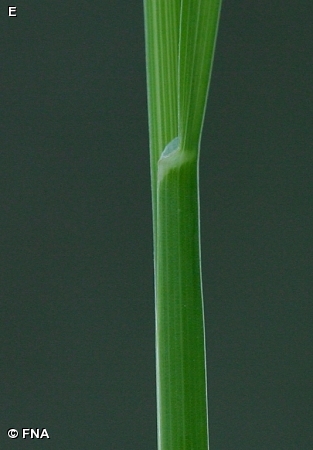
Strongly rhizomatous perennial often growing in clumps or loose colonies (B). Wiry stems are flattened, especially in their upper portions as shown in the front, side and cross-sectional views (D,E,F). Stems are up to 24 inches tall and bear a fairly dense, compact or slightly open panicle which usually has no more than 2 branches at each node (A). The ascending leaves are short (up to 4 inches long), narrow, and shaped like the prow of a boat at the tip.
Wide variety of habitats, most often in disturbed sites. It is rare in Fontenelle Forest along Stream and Missouri Trails. It has not been identified at Neale Woods. Flowering occurs from June to August.
The flattened stem separates Canada Bluegrass from our other bluegrass species which have round, or nearly round stems. This feature makes it difficult to roll the stem when grasped between the thumb and index finger.
Canada Bluegrass is something of a misnomer, since it was actually introduced from Eurasia in the late 1700’s, It competes poorly with Kentucky luegrass (Poa pratensis) in good soils. Canada Bluegrass does better in poorer soils or drier situations and, for that reason, is sometimes used for cover or erosion control in disturbed sites.
The content of NatureSearch is provided by dedicated volunteer Naturalists of Fontenelle Forest who strive to provide the most accurate information available. Contributors of the images retain their copyrights. The point of contact for this page is: Neal Ratzlaff.





